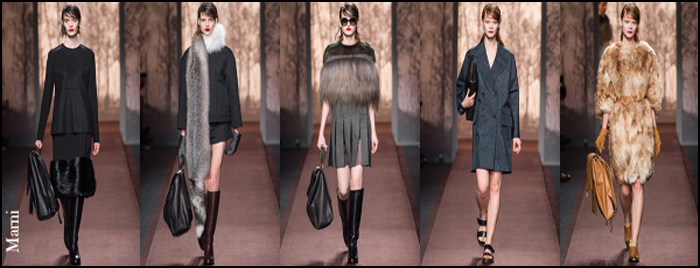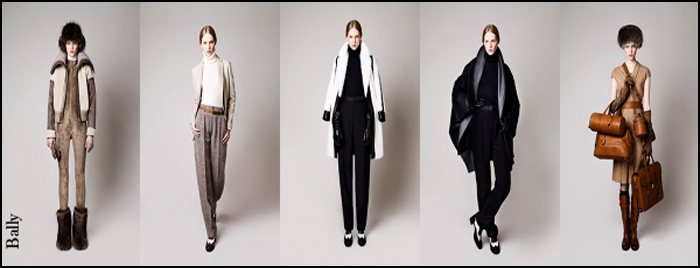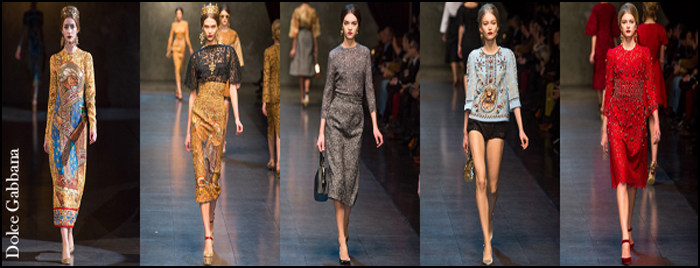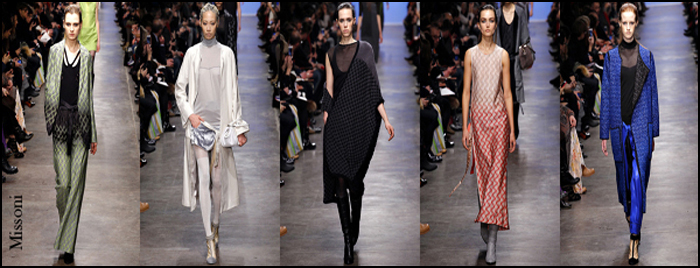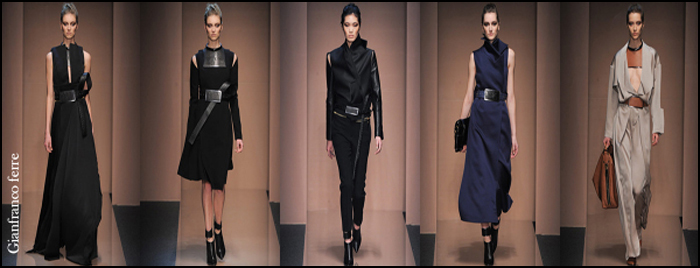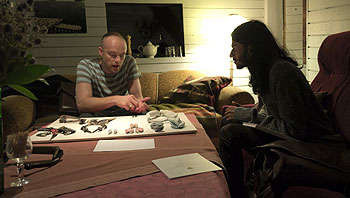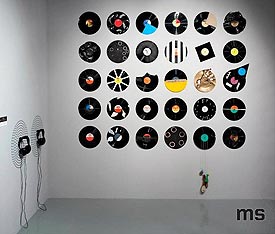
After New York and Paris, begins the awaited fall-winter 13-14 women’s fashion week in Milan.
Alberta Ferretti showed feminine instinct in the collection, the colors dominated were white, red, grey & blue with materials of lace, silk, and plissé. In one word, a Ferretti evening dress for a dreamy, last-gasp countdown.
N21 came with a very classic style statement a merge between the British and his new collection saw mixed tweeds, plaids, and checks with plenty of embroidery. Sweatshirt with a button-up and cropped pants with embroidery Swarovski-studded socks, pink lace pencil skirt over-embroidered with birds motifs. The printed gazars with the wide black silicone bands across the midriff, blue long coat with double breasted and a complete black to black outfit bought a very modern visual to the audience.
Max Mara made a wide range of display of winter outer wears coats and jackets were positively gigantic and layered. You see a kind of Bauhaus inspired collection with bold rugby-stripe parkas and peacoats, as well as a stretchy knit dress and pencil skirt, the loose-fitting elastic-waist pants in cashmere knit or techno satin felt too much like pajamas. The colors were mostly ochers, brown, golden satin & navy.
Fendi had a big FF logo behind the runaway and the model stood with all bunny furs but very candy feeling. Lagerfeld showed some animated feeling in the whole look he created; the funny use of fur in bagsm bangles, belts and sunglasses, an elegant, extravagant, techno-barbarian riposte to the realities of everyday dress. The colors used were pink, purple, fuchsia, black, red and shades of brown; the bright colors were used so intelligently no other than Lagerfeld could have portrayed this effect.

As his usual way Antonio Marras showed his poetic feelings the romance and drama of fashion scarcely bears repeating one more time. Every details is taken care of very minutely, his obsession with women and their character showed here, the inspiration from early 20th century of the British culture. It was a subject made for him. The Bloomsbury lot was freethinkers, obsessed with aesthetics, careless with convention. There was plenty of prints, collaged fabrics and textures, a floral environment with a sound of romance and scent in the air.
Dsquared continued from where they left previous time, Dan and Dean restaged the jazz club set from their men’s show last month for their women’s collection tonight. It was back to the 1940s again. Stylish glam look which seems an occasion for the party lot of jewels either in body or in the dresses, hats add a special signature to the whole collection. Colors influenced were red, yellow, pink, blue, purple, beige and elements of yellow family.
Another glam look collection with a hint of futuristic elements was Moschino. The collection is inspiration with the socialite, equestrian, champion skier, and all-around fabulous creature Ann Bonfoey Taylor, a prodigious twentieth-century style icon to the cognoscenti. There was a look of irregular Highland fling, with incongruous injections of Annie Oakley and Japanese school uniforms.
Seems a very beautiful and successful collection form Veronica Etro, she looked very confident and complete with the outcome. The impressive kaleidoscopic backdrop might have offered a clue: Reality is mutable, darkness inevitably follows light. The influence of the collection was cathedral vaults and Renaissance ceilings, nineteenth-century ethnic textiles, Russian ceramics. Intricate prints were overlaid with black geometric intrusions. It looked one of the very devoted and complete collections so far in Milan.

A hot sexy and punky collection was seen this time at Versace. Donatella herself is original rock chick. So when those two threads were woven together tonight, you got one convincing statement. “Vunk!” she called it ‘The spiky edge of punk, the slinky sex of Versace’. Deep fetish looks with the use of latex & vinyl material; she herself was wearing vinyl jeans. Spikes and nails and bolts were all over earrings and chokers and bracelets. Seems we were back again to the sex pistol age of 70’s.
Posted by: Amal Kiran Jana from Milan at 5.13 PM


 Prints: As like summers prints were not the primary focus but designer like Antonio Marras used print as an art in canvas, some other were Dolce & Gabbana using prints to depict the Church prints and Roberto Cavalli with its Maximalist approach of mixing things.
Prints: As like summers prints were not the primary focus but designer like Antonio Marras used print as an art in canvas, some other were Dolce & Gabbana using prints to depict the Church prints and Roberto Cavalli with its Maximalist approach of mixing things.



 The exhibition „Irving Penn. Diverse Worlds” presents photographs from several of Irving Penn’s best-known series. Most of them were donated to the Moderna Museet, Sweden in 1995 by the artist in memory of his Swedish-born wife, Lisa Fonssagrives-Penn. The exhibition includes photographs that span a period of more than fifty years, as well as some of his spreads for magazines, primarily the American magazine Vogue.
The exhibition „Irving Penn. Diverse Worlds” presents photographs from several of Irving Penn’s best-known series. Most of them were donated to the Moderna Museet, Sweden in 1995 by the artist in memory of his Swedish-born wife, Lisa Fonssagrives-Penn. The exhibition includes photographs that span a period of more than fifty years, as well as some of his spreads for magazines, primarily the American magazine Vogue.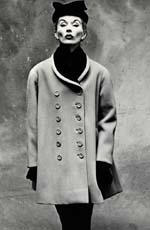
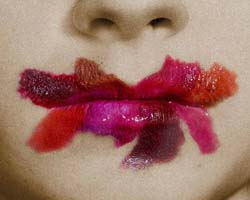 With a degree in art, Penn was quite familiar with both contemporary and historical art. His still lifes allude to the masters of art history, which reflects the particular interest he took in European still lifes of the early 17th and 18th centuries. His oeuvre contains both commercial and artistic work. In the 1970s though he began to focus increasingly on exhibitions and books, and in 1984 the Museum of Modern Art in New York arranged a comprehensive retrospective of his work. The year after, Irving Penn was awarded the international photography prize the Hasselblad Award.
With a degree in art, Penn was quite familiar with both contemporary and historical art. His still lifes allude to the masters of art history, which reflects the particular interest he took in European still lifes of the early 17th and 18th centuries. His oeuvre contains both commercial and artistic work. In the 1970s though he began to focus increasingly on exhibitions and books, and in 1984 the Museum of Modern Art in New York arranged a comprehensive retrospective of his work. The year after, Irving Penn was awarded the international photography prize the Hasselblad Award.
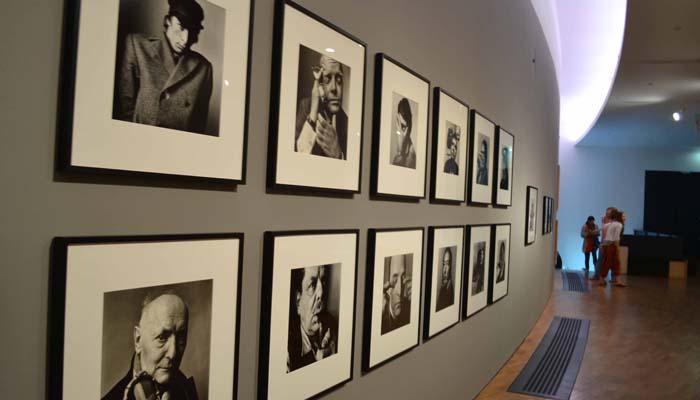
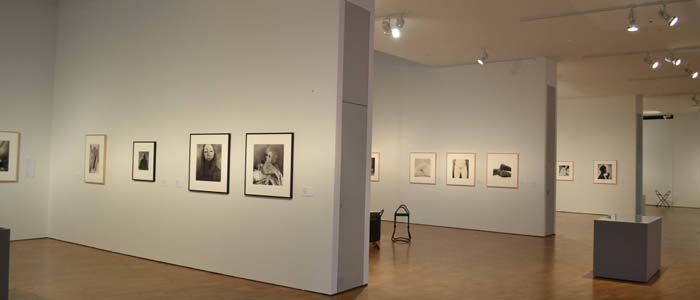

 Triennale Milano continues the series dedicated to the new international design in the MINI & Triennale CreativeSet offering an unprecedented selection of the most interesting works of contemporary Indian designers.
Triennale Milano continues the series dedicated to the new international design in the MINI & Triennale CreativeSet offering an unprecedented selection of the most interesting works of contemporary Indian designers.






